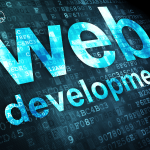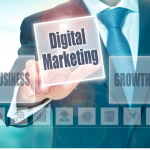How Enterprise IT Solutions Drive Digital Transformation?

Introduction
Enterprise IT solutions involve various technologies, including software, hardware, and services that are unique to corporate-level businesses. Such solutions consist of applications designed to improve a firm’s productivity, achieve key goals, and automate business progress.
IT solutions are the key enablers for many organizations to undergo digital transformation and redefine how companies should work creatively. Digitalization means adapting Information Technology and communicating technologies to improve efficiency, flexibility, and robustness.
Relationship Between IT Solutions and Digital Innovations
IT solutions in enterprises help organizations try out new solutions and approaches in their operations. Driven by technology trends such as cloud computing, artificial intelligence (AI), and big data analytics, these solutions provide a faster pace of success.
The applications of these advanced tools improve the decision-making system, develop efficient methods to perform activities, and develop revenues from new products. Such versatility matters for any group that wants to be future-proof in the digital economy.
Furthermore, IT solutions support firms in reworking their client experiences, a fundamental aspect of digital transformation. By employing customer analytics, many enterprises can enhance their communication approach and be more relevant to their customers so that they can respond well to their needs.
Finally, digital innovations continue to act as a framework along with IT solutions to respond the market shifts better.
How Enterprise IT Solutions Make Operations More Efficient?
Business processes are made easier in a way that eliminates overlapping and enhances productivity due to current IT solutions. Here are some key ways of how to achieve this:
1. Automation of Routine Tasks
IT solutions substitute routine and paper-based activities like data, reports, and timetables which saves the employees time and lets them work on the value work. This reduces mistakes and increases working speed.
2. Centralized Data Management
Different IT tools integrate data from different departments into one unified system in the advanced systems. This centralization makes it possible to gain immediate access to relevant information in less than no time.
3. Supply Chain Management
New-age digital tools enable real-time tracking of payments, shipping, and other logistical factors in the supply chain process. This leads to faster and more efficient delivery to customers.
4. Cloud computing
The utilization of cloud services minimizes the expensive physical equipment and services for their maintenance. This means that a firm can maintain the IT structure in a cheaper and more manageable way.
5. Data Analysis and Reporting Improvement
This step is a collection of applications that transform data into useful information to see areas that require improvement. The data analysis helps in making sound decisions promoting productivity.
When implemented these IT solutions allow the enterprises to increase their operational efficiency, decrease costs, and sustain competitiveness.
Future Trends in Enterprise IT and Digital Transformation:
Enterprise IT solutions will take the limelight as technology continues to advance rapidly through innovative trends that will redefine business strategies. Looking ahead, below are several transformative trends that will be shortly in trend.
AI and Machine Learning Integration
AI and machine learning (ML) will remain key drivers in the whole transformation process. Most businesses started using AI to automate complex tasks, get decision-making support, and enhance customer interaction through virtual assistants.
Cloud-First and Hybrid Cloud Strategies
This strategy allows firms to focus on cloud solutions to keep public and private data to themselves. This allows companies to provide better security for customer’s data. This approach encourages seamless flexibility and ongoing innovation in business.
Edge Computing for Faster Processing
Edge computing is emerging as one of the critical trends. This helps in the processing of data and reduces time wastage to solve the problems. Edge computing improves working efficiency by avoiding sending data to centralized cloud servers.
5G Connectivity Transforms IT Infrastructure
Massively deployed 5G technology will revolutionize enterprise IT, especially with ultra-fast and low latency. This will speed up the working abilities of systems with fewer lags and delays.
These are trends indicating how enterprise IT solutions would continue improving during digital transformation. Such evolution will keep businesses ahead of the curve due to new technologies along with the market demand.
Conclusion
In conclusion, an enterprise IT solution is not just a tool, it also acts as a catalyst for an organization’s digital transformation, giving it a competitive edge, and improving market understanding. Improving operational efficiency enables businesses to be responsive in their domain through the automation of processes, centralization of data, and good customer service.
As we look toward the future, new technologies like AI, a cloud strategy, edge computing, and 5G connectivity will change the way an enterprise operates, which will continue to support corporations to stand in the market. Adoption of these technologies is going to be vital if a brand wants to achieve actual potential on its digital transformation journey.










